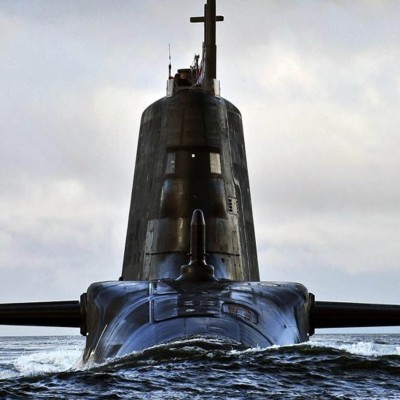History of the Submarine Service
At the beginning of the 20th century, the idea of submarine warfare was considered by senior personnel in the Admiralty to be “Underhand, unfair and damned un-English” (Admiral Sir Arthur Wilson VC, 1901). However, those in favour of experimenting with submarine technology eventually won the argument, and the Royal Navy launched its first submarine, Holland 1, in 1901. The Submarine Service proved its worth in World War I, where it was awarded five of the Royal Navy’s 14 Victoria Crosses of the war, the first to Lieutenant Norman Holbrook, Commanding Officer of HMS B11. During World War II the major operating arenas were the Norwegian waters; the Mediterranean where a flotilla of submarines fought a successful battle against the Axis replenishment route to North Africa; and the Far East where Royal Navy submarines disrupted Japanese shipping operating in the Malacca Straits. The RN started the war with 60 submarines.
The first British nuclear-powered submarine, HMS Dreadnought (S101) was launched in 1960 based around a US-built nuclear reactor. This was complemented by the Valiant class from 1966, which featured the Rolls-Royce PWR1 reactor. Royal Navy submarines became an important part of the strategic nuclear deterrent with the introduction of the Resolution class ballistic missile submarines (SSBNs) under the Polaris programme from 1968. These carried US-built UGM-27 Polaris A-3 missiles and were later replaced by the Vanguard class submarines and the Trident missile system from 1994. HMS Conqueror made history in 1982 during the Falklands War when she became the first nuclear-powered submarine to sink a surface ship, the ARA General Belgrano. In May 1991 Oberon class submarines HMS Opossum and her sister HMS Otus returned to the submarine base HMS Dolphin in Gosport from patrol in the Persian Gulf flying Jolly Rogers (see below), the only indication that they had been involved in alleged SAS and SBS reconnaissance operations. In 1999 HMS Splendid participated in the Kosovo Conflict and became the first Royal Navy submarine to fire a cruise missile in anger. After Operation Veritas, the attack on Al-Qaeda and Taliban forces following the 9/11 attacks in the United States, it emerged that HMS Trafalgar was the first Royal Navy submarine to launch Tomahawk cruise missiles against Afghanistan,.[7] HMS Triumph was also involved in the initial strikes.[8] On 16 April 2003 it was reported that HMS Turbulent, the first Royal Navy vessel to return home from the war against Iraq, had launched fourteen Tomahawk cruise missiles.
Photograph Crew of HMS Opossum © Crown, Royal Navy, MOD London



There are no comments